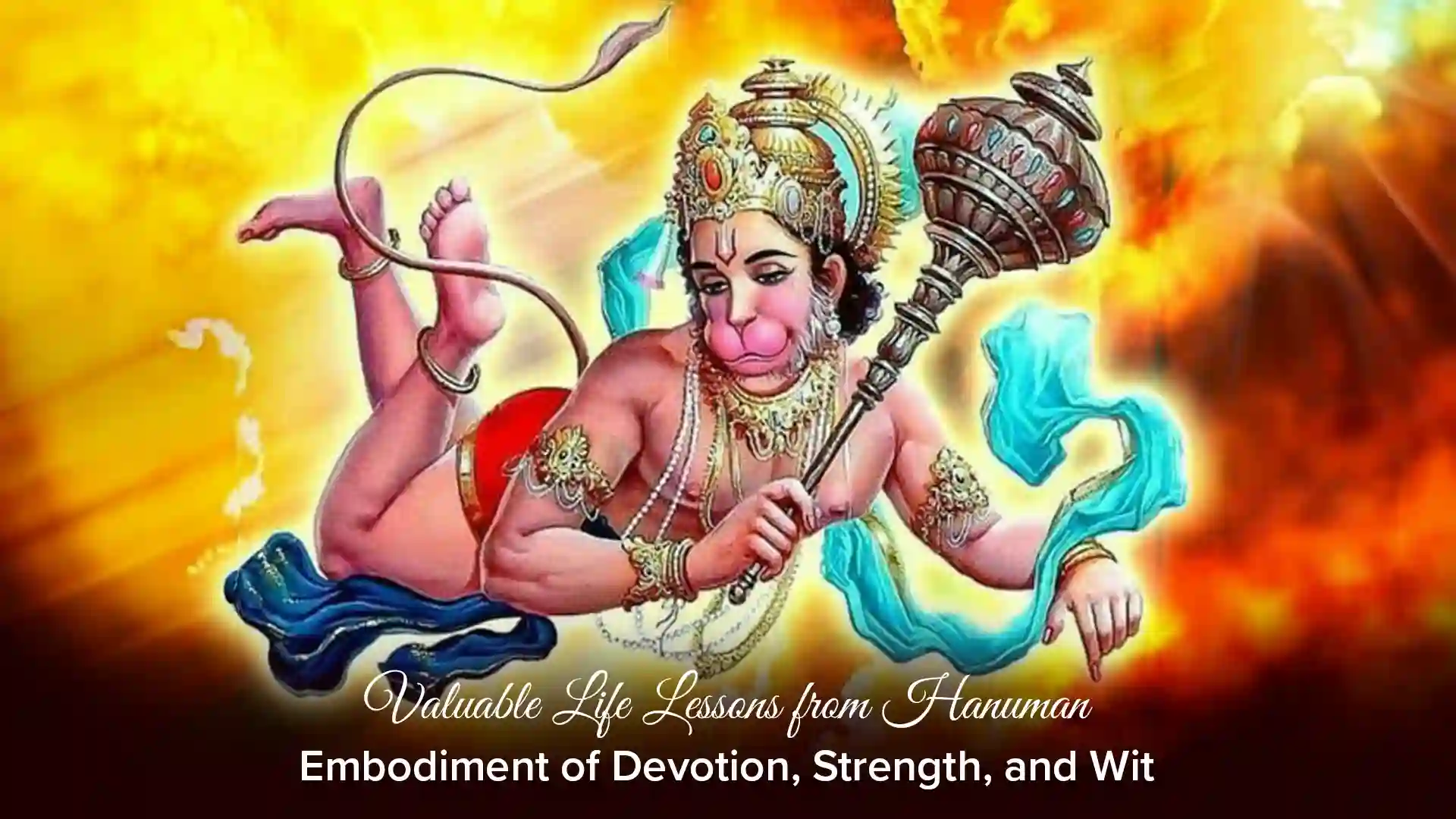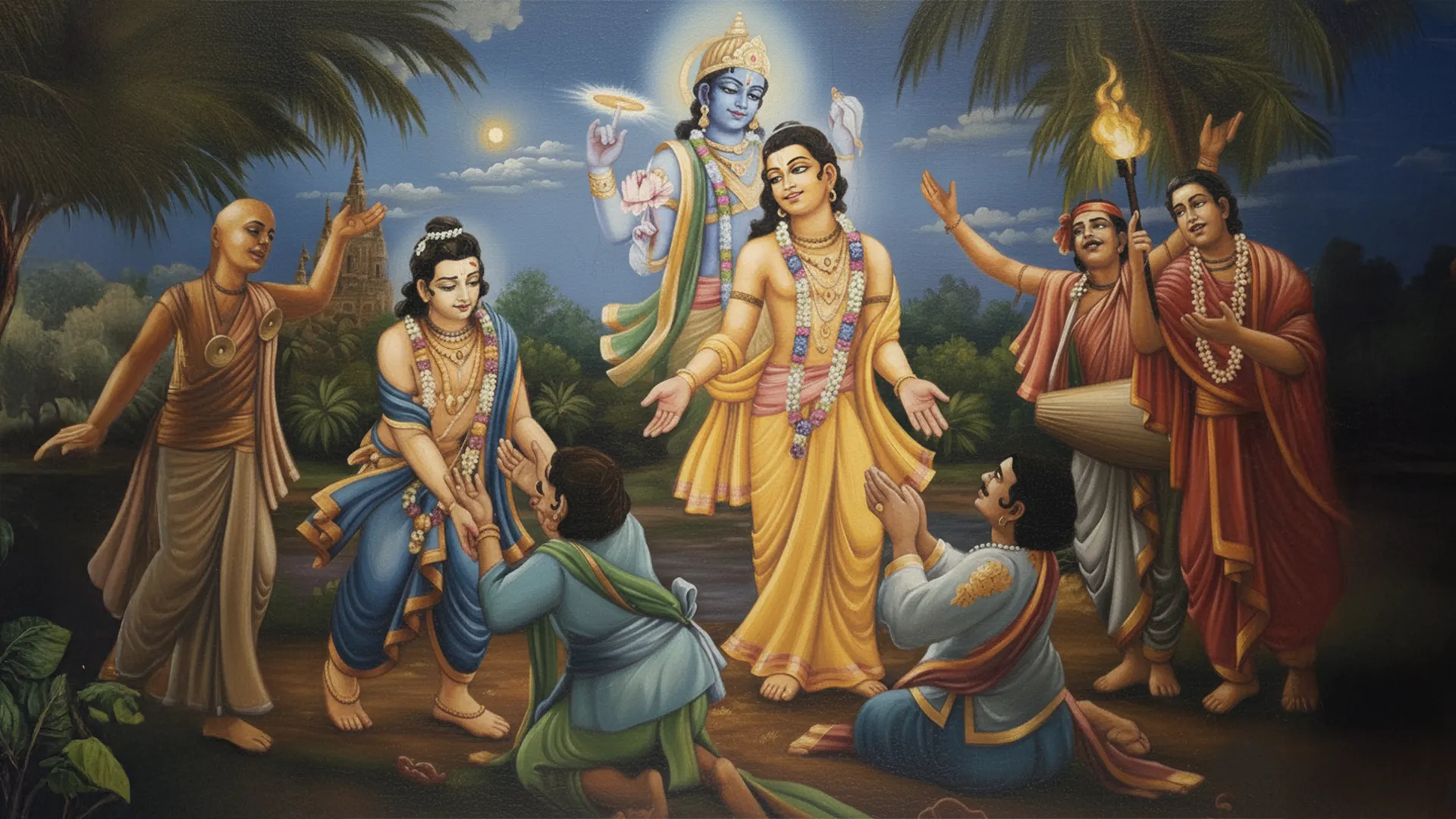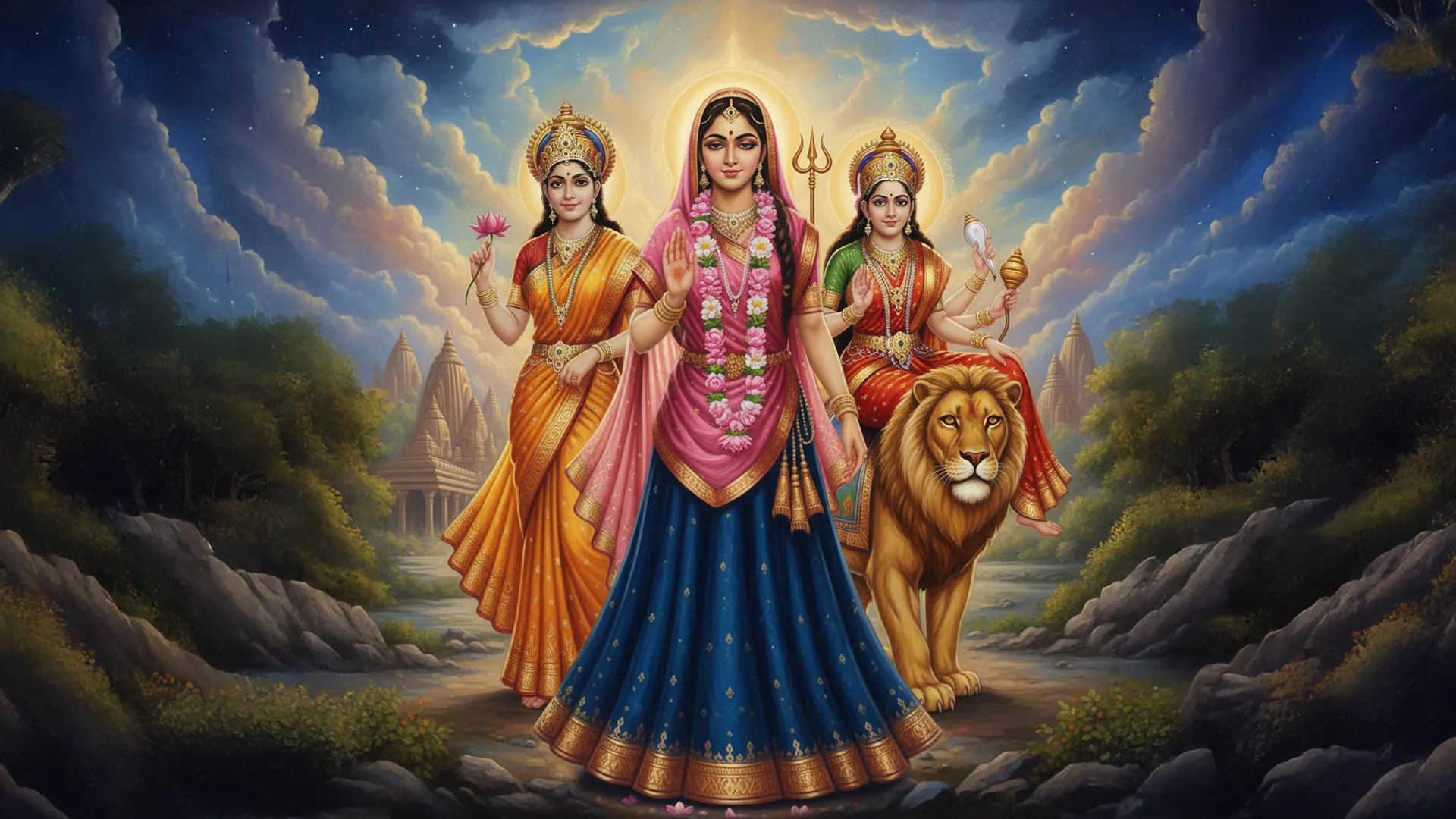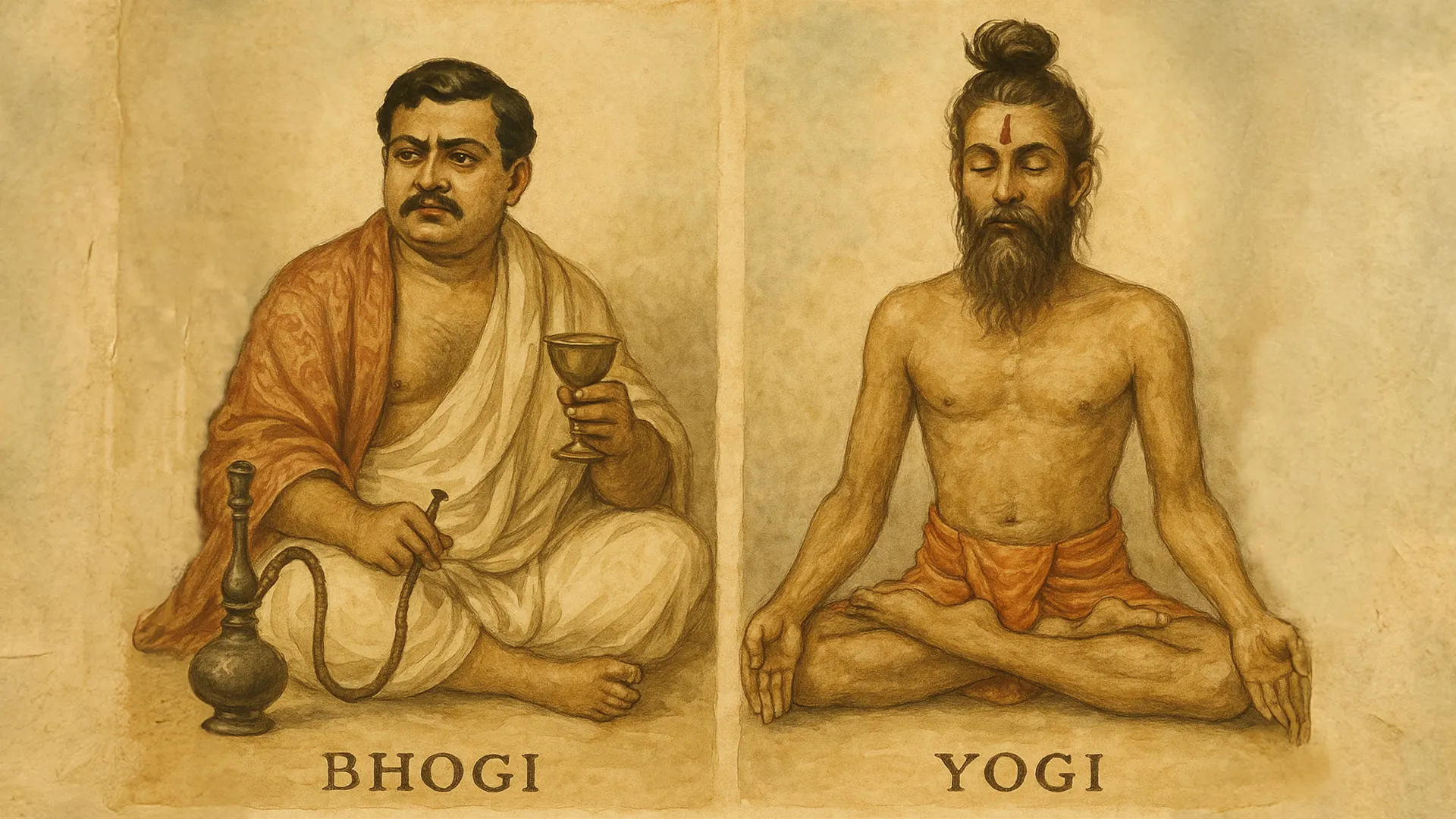Hanuman, a beloved character in Vedic literature, is respected and admired across Bharat and around the world. He is known for his unwavering devotion, immense strength, quick wit, simplicity, and selfless service. His story has inspired many artists, writers, and performers throughout history. The "Hanuman Chalisa", a devotional hymn composed by Goswami Tulsidas in the 16th century, is still recited by millions of devotees worldwide.
Hanuman is often considered a selfless devotee of Bhagwan Ram and displays superhuman strength and courage. He uses his sharp intellect to outsmart his enemies, yet he remains humble and steadfast in his service to Ram. Many saints have described Hanuman as a divine personality whose life and actions exemplify what it means to be a true servant of God. Hanuman ji's teachings also emphasise the importance of seeing all beings as parts of God and as expressions of divine energy.
सीय राममय सब जग जानी। करउँ प्रनाम जोरि जुग पानी।।
sīyā rāmamaya saba jaga jānī, karauñ pranāma jori juga pānī
"I see the forms of Bhagwan Ram and Mother Sita in everyone, and so I fold my hands and offer my respects to all."
Various scriptures, mantras, devotional hymns, and commentaries beautifully describe Hanuman ji's divine qualities and character strengths. Tulsidas Ji's Hanuman Chalisa and Sundar Kand from Ramcharitmanas expound on his divine attributes and virtues.
Hanuman's Unflinching Devotion to Ram
Hanuman ji is known for his exclusive, constant, selfless devotion to Bhagwan Ram. Every action of Hanuman ji reflects how his conscious and subconscious mind is attached to Ram. When Mother Sita gives Hanuman ji a beautiful necklace with pearl beads, he breaks it because it does not embed Ram's image. When questioned about his actions, Hanuman ji explains that he has no use for objects that do not have Ram's image. He is so detached from everything else, and so attached to Ram that he tears his heart apart to reveal the image of Bhagwan Ram and Mother Sita inside.
These are just a few of the countless leelas that Hanuman ji has performed to show his love and devotion for Bhagwan Ram. Legend has it that even in Kaliyug, Hanuman ji arrives wherever the Ram Katha is narrated with deep devotional sentiments to savour it. Hanuman ji's love and absorption in the Ram Katha are so profound that they transcend time and space.
Exclusive Focus on the Goal
Hanuman's legendary life is exemplary of his focus and goal-orientedness. His flight across the ocean to Lanka in search of Mother Sita is educative in how he faces challenges. One of these is the mountain Mainaka, who also desires to serve Bhagwan Ram by serving Ram's servant, Hanuman. He urges Hanuman to take a rest on him before continuing his onerous flight. But Hanuman knows how distressed Shree Ram is by his separation from His beloved, Sita. Devoted to His duty, Hanuman bows to Mainaka and says:
राम काजु कीन्हें बिनु मोहि कहाँ बिश्राम॥
rām kāju kinhen binu mohi kāhān vishrām
'How can I rest without completing the work of my Master Shree Ram?'
Hanuman's extraordinary Wit and Strength
While flying to Lanka, Hanuman ji comes face-to-face with demoness Surasa, who is terrifying with jaws like mountains, sharp teeth, and deadly fangs. With a suddenness that startles even the brave Hanuman, she leaps forward to devour Hanuman ji. Undeterred, Hanuman ji, with his characteristic wit and devotion, persuades Surasa to let him continue his mission for Ram. He promises to return after fulfilling his seva, explaining that the duty of serving Ram binds him. Surasa, citing a boon granted to her, insists that Hanuman must first enter her mouth before he can proceed further. In a clever twist, Hanuman ji challenges her to widen her mouth enough to swallow him.
जस जस सुरसा बदनु बढ़ावा। तासु दून कपि रूप देखावा॥
सत जोजन तेहिं आनन कीन्हा। अति लघु रूप पवनसुत लीन्हा॥
jas jas surasā badanu baṛhāvā। tāsu dūna kapi rūpa dekhāvā॥
sat jojan tehi ānana kīnha। ati laghu rūpa pavanasuta līnha॥
A battle of wits unfolds as they both begin to increase their sizes. With lightning speed, Hanuman ji swiftly shrinks himself at the opportune moment, slipping into Surasa's mouth and out before she can react. As he emerges unscathed, Hanuman ji respectfully acknowledges Surasa's boon, explaining that his task for Ram is now complete. Determined in his heart, he continues on his path, undeterred by the obstacles ahead.
Impressed by Hanuman ji's wit, Surasa reveals that devatas sent her to test his wit. Since Hanuman ji passes the test, Surasa blesses him by saying, "You can accomplish all of Ram's tasks, for you are the repository of strength and wisdom."
राम काजु सबु करिहहु तुम्ह बल बुद्धि निधान।
rāma kāju sabu karahiḥu tumha bal buddhi nidhāna।
When Hanuman is captured by Ravan's forces and brought before the demon king, he displays an extraordinary feat of strength. Ravan is angered by Hanuman's audacity and orders that his tail be set on fire as punishment. However, instead of showing fear or pain, Hanuman uses this opportunity to display his immense power and unwavering devotion to Bhagwan Ram.
देह बिसाल परम हरुआई। मंदिर तें मंदिर चढ़ धाई॥
जरइ नगर भा लोग बिहाला। झपट लपट बहु कोटि कराला॥
deha bisāla parama haruāī। mandira teṃ mandira chaṛha dhāī॥
jarai nagara bhā loga bihālā। jhapaṭa lapaṭa bahu koṭi karālā॥
Servants of Ravan wrap his tail in cloth and set it ablaze. Hanuman remains calm and expands his form to a massive size. With his tail on fire, he leaps from rooftop to rooftop in Lanka, setting the entire city ablaze with his burning tail. This incredible display of strength and wit causes the city of Lanka to tremble in fear. Ravan's soldiers and citizens scramble in panic as the flames engulf their once-mighty city made of gold.
There are numerous incidents in Ramayan where Hanuman ji's wit, strength, and quick thinking are fully on display. The following lines from Tulasidas ji's "Hanuman Chalisa" perfectly sum up his divine attributes:
जय हनुमान ज्ञान गुन सागर।
jaya hanumāna jñāna guna sāgara।
Victory to bhagwan Hanuman, the ocean of wisdom and virtue.
राम दूत अतुलित बल धामा।
rām dūta atulita bala dhāmā।
You are Bhagwan Ram’s emissary, the abode of matchless power.
बिद्यावान गुणी अति चातुर । राम-काज करिबे को आतुर ॥
vidyāvana guṇī ati cātura। rāma-kāja karibe ko ātura॥
You are the wisest of the wise, virtuous and (morally) clever. You are always eager to do bhagwan Ram’s works.
अष्ट सिद्धि नव निधि के दाता ।
aṣṭa siddhi nava nidhi ke dātā।
Mother Janaki has blessed you to give a boon further to the deserving ones, wherein you can grant the siddhis (eight different powers) and the nidhis (nine different kinds of wealth).
Life Lessons from Hanuman for Growth and Strength
The life of Hanuman ji serves as a profound example of divine virtues and strengths, which can inspire us as material beings. While Hanuman ji embodies innumerable divine qualities, we humans can learn valuable lessons on facing life's obstacles with a calm and deliberate approach.
Reflecting on our past challenges offers a chance for introspection. This self-assessment allows us to grow and refine our problem-solving skills.
Identifying our life's goals is crucial to help us stay focused amid social obligations and distractions. We must prioritise spiritual practices (sadhana) and service to God/Guru (seva) to ensure that they take precedence over activities that do not align with our life's purpose.
Examining our attachment to worldly matters versus our devotion to the divine realm prompts deep reflection. We can ponder why the mind clings to the material world and contemplate ways to cultivate detachment from worldly objects, events, and even personal preferences.
Embracing the spirit of servitude, like Hanuman ji, invites us to reflect on sevas that demand more humility and selfless dedication. By internalising these reflections and creating a growth plan, we can align ourselves more closely with the divine virtues exemplified by Hanuman ji, fostering spiritual progress and inner peace.
When working towards accomplishing important goals, we may come across comforts in various ways. Our mind may be prone to enjoy those comforts. However, we won't be swayed if we keep our higher purpose foremost. Remember, the biggest enemy to progress is within us—it is our own mindset of shying away from inconvenience. Adverse circumstances are inevitable. It is up to us how we utilise them to discover the best of our abilities and move forward to serve a higher purpose in life. The uncommonly known secret is that we can willingly bear the severest hardships when we find it in sync with a valuable purpose we firmly believe in. After all, 'man does not live by bread alone.'









What our Participants say